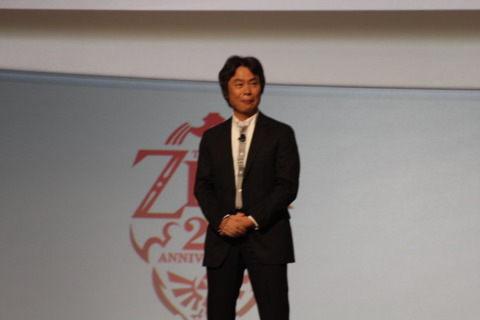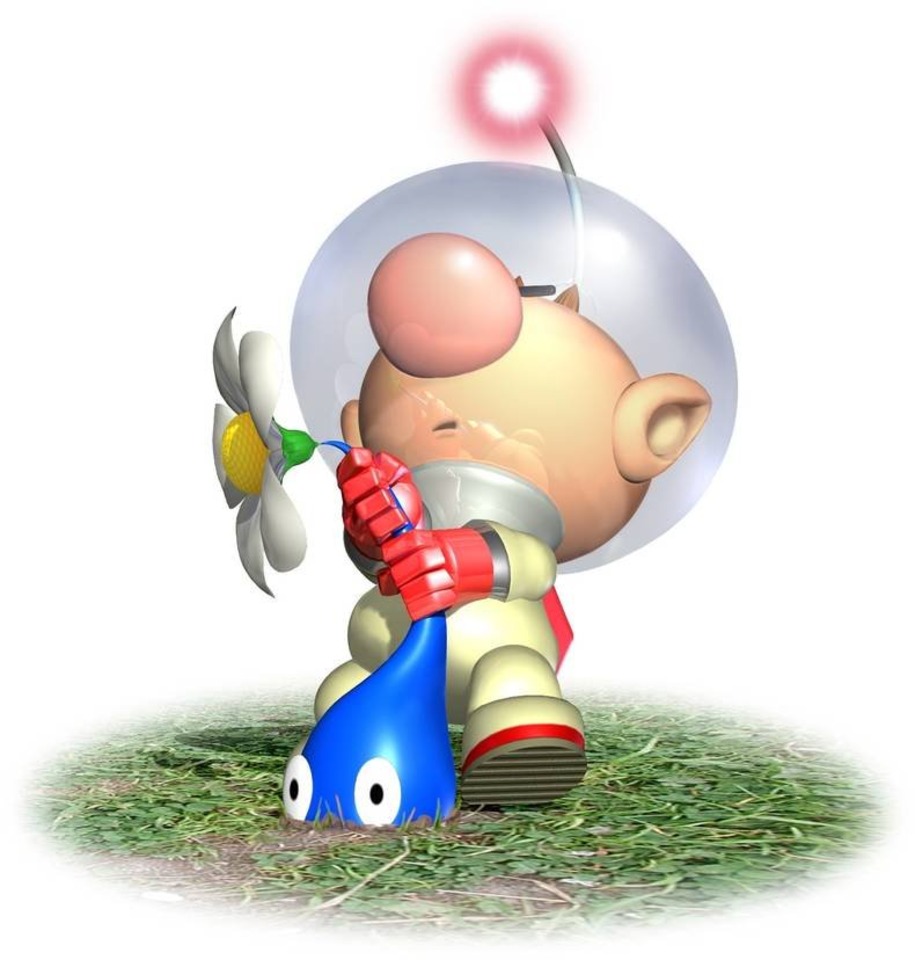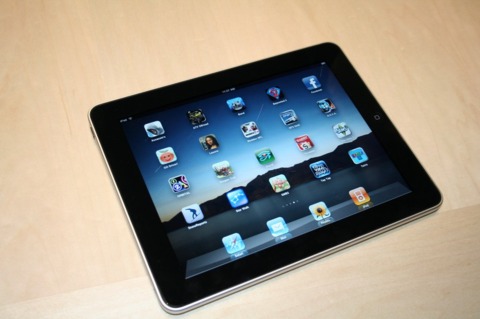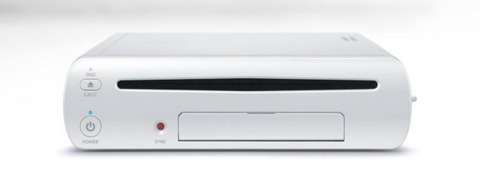E3 2011: Miyamoto speaks his mind
The creator of Mario dishes on the decision to move Pikmin to the Wii U, similarities between the new controller and the iPad, 3DS development struggles, and more.
It was a huge Electronic Entertainment Expo for Nintendo this year. On top of promoting its 3DS lineup, the company formally announced a successor to the Wii, called the Wii U. GameSpot had a chance to speak with Mario creator and Nintendo senior managing director Shigeru Miyamoto about the company's handheld and its software, how The Legend of Zelda's 25th anniversary celebration came to be, and what the future holds for Nintendo's brand-new platform.

GameSpot: Let's start with the 3DS. We got to see a lot of content announced. Some of it is titles that we are familiar with, and some of it is new. Has there been a philosophy or a direction that Nintendo is taking in bringing titles to the 3DS?
Shigeru Miyamoto: Well, I'm really seeing a couple of different tendencies in 3DS software, and one is that the system itself is, I think, a great system, where games that we've released in the past can be remade and really take on new meaning, and there are new ways to make them fun. But on the other hand, at this point, what we're also looking at of course is creating new installments in existing franchises. And so that's, I think, where the system is right now.
GS: So speaking of existing franchises, if you were going to make another Pikmin game, would it be on the 3DS or the Wii U? Any preference?
SM: I'm trying not to talk about Pikmin too much. [laughs] If I leak it in an interview, then I'll have an issue. But, yeah, we're still working on a Pikmin game, and we have been for quite a while. When you look at [the Wii U] hardware, it's almost such a perfect fit for Pikmin that you would ask, "Why wouldn't you make it for this hardware"?
GS: That is my question.

SM: If we were to try to take what we've been working on for Wii and finish it, it would still take us some time to do that. So we're probably going to be looking at putting it on the Wii U instead.
GS: And so as someone who knows the hardware very well and has an eye for what would work on it, what do you think developers are struggling with right now on the 3DS?
SM: One thing that you often see with new hardware is that for any developer there can be challenges of how you get the most performance out of the system. And there are certainly developers that are able to kind of do that on their own. But I think there's also maybe a subset of developers that are waiting for Nintendo to provide some service to help them better understand how to do that.
I think what you've seen initially in the launch window are generally games that people worked very hard on over a short period of time to prepare for the launch. So I think that as we get into the next wave of titles, you'll start to see games that are doing a better job of taking advantage of the system. For example, I think I've got the courage to say that Mario Kart is going to be running at 60 frames a second when they release it. It feels really good.
GS: Let's go to Star Fox for a second. It's a fan favorite, but it's kind of what Reggie talked about on the stage. People want what they want, but then sometimes they want something different. Why did you decide to bring Star Fox 64 to the 3DS, as opposed to maybe seeing if it was possible to make a revamped game along the lines of Kid Icarus?
SM: Well, for me personally, I have an idea that I wanted to kind of bring Star Fox back to its origins. So obviously over the years we've done different things with the Star Fox franchise, things like Star Fox Adventures and whatnot. But one thing that I really wanted to do was to bring it back to where it originally came from, which was that kind of romantic idea that guys have of flying a kind of fighter jet or a spaceship and doing battles in air, like Top Gun.

What I thought was that maybe the best way to do that would be to go back to Star Fox 64 and re-create that game in 3D. So I think there are a couple of things, and one is that the original Star Fox 64 came out now 14 years ago. So obviously kids nowadays haven't experienced that game, and the same I think could be said for Ocarina of Time. It's a tough balance. You can't make everything at once.
We felt that it would be better to take the original game and revamp it in 3D with some new features so that people can experience that again, if they've already played it. Or they can experience it for the first time and we would be able to get the games out more quickly, rather than necessarily trying to create a whole new game from scratch, from the ground up.
GS: Now because of your position at Nintendo and the fact that you oversee so many projects, where is your passion right now? Do you like making 3DS games? Do you like experimenting with the new stuff? Do you like thinking about stuff in the Virtual Console space?
SM: What my passion is, or really what I want to do, is to really try to blaze a trail for where video games can go in the future, especially, right now, in looking at Wii U. Obviously the Wii was a device that was something most people had in their living room, and that's definitely what we want Wii U to be, and to be a device that everyone in the household can interact with. But at the same time, we wanted to unite that concept with more traditional video game experiences and bring those together on a single console.
When I'm thinking about that, I'm also working very hard on Skyward Sword, playing the game every day, rewriting the text, changing enemy abilities and things like that. So I'm having a lot of fun kind of working on the minute details of games as well. And sometimes it feels like, when I'm working kind of at that more granular level, that it's really kind of taking advantage of where my real skill lies. So it's a lot of fun.

GS: Is there any interest in bringing Virtual Boy games to the 3DS?
SM: Well, that's not my exact plan, but something like that could happen. I can say that in my photo album on my Nintendo 3DS, there is a photo of a Virtual Boy. So that says that I do have a Virtual Boy at my disposal. [laughs]
GS: Why did it seem like a sequel to Luigi's Mansion worked best on the 3DS as opposed to the Wii?
SM: When we first started our initial experiments with the 3D screen, the first game that we put on it was Luigi's Mansion, as an experiment. What we found was that the Luigi's Mansion game is one where you're looking at a structure or a building from a completely horizontal view. And the way that the depth of that building goes back into the screen, and you can see the layers of depth within the structure, was something that we thought was very well suited to Nintendo 3DS.
GS: Are you going to use any kind of AR functionality with it?
SM: We're not planning any AR functionality, but we're looking at doing some things with the camera to make it simpler to play, but also looking at perhaps trying to implement some sort of gyro control.
GS: Well, to be more specific, not an AR card--something like Face Raiders.
SM: Oh, yeah, that's a good idea, we could do that too. I need my notepad. [laughs] Yeah, actually the [horror elements of the game] are not super-scary, but that horror-type experience is one that maybe is better suited to that small screen where you're hunched over peering into it, because you have the posture of somebody who's scared when you do that. What we found was that when we showed it off internally to people, that even though the game was really not in any kind of a state of completion, people loved it.
GS: Zelda is 25 years old. Did a lot of planning go into lining up the games that you guys are going to release this year for it? Was there a master plan basically to celebrate this, or did that happen naturally?
SM: It's a long story, but the Mario 25th anniversary wasn't my idea. Mr. Iwata came and he said, "It's the 25th anniversary of Mario and we should do something." And my feeling was that it's not for me to celebrate. It's for everyone else to celebrate.

So the planning for that went on, and we had the 25th anniversary last year. But then the subject came up that if we did that for Mario, it's kind of sad if we didn't do a 25th anniversary for Zelda. This time what we decided to do was rather than just coming up with one idea and going forward with it, we wanted to have everybody contribute and offer their ideas for how to celebrate it.
And then the other thing was that I always felt that the 25th Anniversary Mario Pack was something that wasn't very typical for Nintendo to do. My feeling was I didn't want to just do the same thing again and instead wanted to try to celebrate the 25th anniversary of Zelda in a different way. And so we started talking about what we could do that would be new and fresh, and we actually thought of this idea of trying to do 25 different events to celebrate the 25th anniversary. But that got very complicated, as you point out. And so within the ideas that had come up, we thought that some of the discussions about music and how we could use music with the 25th anniversary was something that meshed really well with the Zelda series and its connection to music.
And so we decided to focus in that direction. And then the other thing that we really thought about was that rather than trying to do it as sort of a business venture, to celebrate the 25th anniversary, we wanted to try to give the fans as much opportunity as possible to celebrate it themselves and experience these on their own. So that's why you're seeing so many things that are free downloads, or things like that.
GS: Do you ever stop and reflect on the fact that you created something that has been around for 25 years and has influenced the direction of gaming? It has inspired game developers, and it has touched an inordinate number of people. How does that make you feel?
SM: Well, personally I just feel really lucky because even in my younger days when I wanted to be a manga artist, I wanted to create things and deliver those to people so that they could enjoy them. And to be in a position to have been able to take my creations and have people all around the world see them and enjoy them is, to me, very fortunate.
GS: How involved were you with the new controller and its development?
SM: Well, I've been most involved with deciding the direction for the new controller and what features it would include. But then in terms of how each of the individual development teams are going to take advantage of that functionality and create games that leverage that, I've really given that responsibility up to each of the directors working underneath me.
And then the other thing is that ever since the NES days, the game console has always been this thing that kind of attached itself to the TV and lived off of the TV. But we really felt that it was done to the point where it was time for the game system to have its own screen so that you can interact with the system regardless of what's going on the TV.

GS: At the last E3, you talked a little bit about the iPad, and we were wondering if that influenced the direction that things are going in now, such as the shape of the controller?
SM: Actually it was coincidental, because even at this point last year at E3, we had done a lot of work on this, and it was pretty far along, and we had been working on the concept for several years. And so we felt it was kind of a funny coincidence that, while we had been working on this, all of a sudden right as we're getting ready to bring it to the public, there's this tablet boom.
On the one hand we felt that if we were to show it off at E3 last year, then people would look at it and say, "Oh, it's like a tablet." But on the other hand, it may have actually helped us because it made it easier for people to understand the concept. Where I think the two are different is that the tablet is designed to function as its own independent device, whereas the new controller is connected to the console and also simultaneously connected to the TV. And so then what you have is this unique interaction between those three pieces, and there's, I think, a lot of different and unique ways that you can use the new controller in conjunction with the TV. It's a great way to search for things, whether it's photos or videos, and then share them with people by putting them up on the TV screen, as well as just the various different kind of gameplay concepts that we're showing.
From a kind of a visual point and an initial kind of conceptual starting point, the two seem similar, [but] because of the unique structure of the console and the new controller and the TV, that when people start playing with it and interacting with it, especially in the living room, they're going to find that it opens up a great deal more possibilities.
GS: How important is hardware power to you these days? It seems like you're more about ideas, concepts, and experiences than making sure that you can count all the hairs in Mario's moustache.
SM: Nintendo is an entertainment company. We're very sensitive to pricing because people have generally only a certain amount of their spending that they'll devote to entertainment. And if you're talking about parents buying something for kids, there are certain price points where parents may be willing to or not willing to purchase a certain product.

But at the same time, you have these technological advances, and you have the needs of being able to take advantage of that technology, and those result in increasing costs and things like that. And so I think that in terms of companies that really look very carefully at what is the best balance between price and possibility in terms of the hardware, Nintendo is the company that's going to probably pay the most attention to striking that right balance.
So when you look at what we're trying to do this time, which is I think maybe to a certain degree somewhat reckless, because we're trying to include this somewhat kind of tablet-like device--this controller with the screen. We're trying to do that by finding the right balance between the CPU and the GPU, the graphics processor, and bringing all of that together with the ability to take advantage of the HD capabilities of the system, and wanting to do the most that we can on that front as well.
We're very sensitive, of course, to trying to do all of this at an appropriate price. So I don't know that we would be able to sit here and say that it's going to necessarily dramatically outperform the systems that are out now. It's part of the balance that we strike in terms of trying to find entertainment that is new and unique.
GS: As you try to bring third parties to the platform, how do you directly encourage them to make use of the Wii U controller's potential? Do you make suggestions, to just make sure that you don't get a port?
SM: The way that we really approach it is, when we show the development community the system, we're feeling that they're looking at it and seeing a lot of new possibilities. And so we're trying to come to them and show them the ways that we've found that you can use the second screen or you can use the built-in gyros. And the more that we do that with them, the more that their own creativity is going to continue to flow, and they're going to start looking at the games that they already have in development and very quickly be able to say, "Oh, these are the ways that I can leverage this in this game that I'm making, to make it even better and allow me to do different things."
GS: So what's your master plan? You have, through your games and now the direction of the Wii, exerted a tremendous influence on the way games have developed and the people who play games. What's the ultimate goal? What would make you feel like you had accomplished what you wanted to accomplish in this industry?
SM: Well, for me personally, I'd like to see my kids get married and give me some grandkids. [laughs] Well, I don't really have a specific goal. I mean, if anything, lately what's been most important to me is to work with my teams and the people that I work with and work on our projects. And when we're done, to be able to look back and say, "Man, that was a tough project, but we had a lot of fun doing that."
And for me, that's kind of become my main theme, working directly with them, to help them unleash their creativity so that we can have fun working on these projects. And really, my job then has become to give them the courage to bring their creativity to life.
GS: Do you understand that you've changed the industry permanently?
SM: I guess I do. [laughs] What's funny is that when people come to me and they say, "You know, I've been playing your games since I was a kid," on the one hand I'm happy, but on the other hand, I feel a tremendous sense of duty and responsibility to them. [laughs] But as more and more of those people have grown up and even started to work for me, I'm starting to feel a little bit better about it.
GS: Thanks for your time.
Got a news tip or want to contact us directly? Email news@gamespot.com
Join the conversation